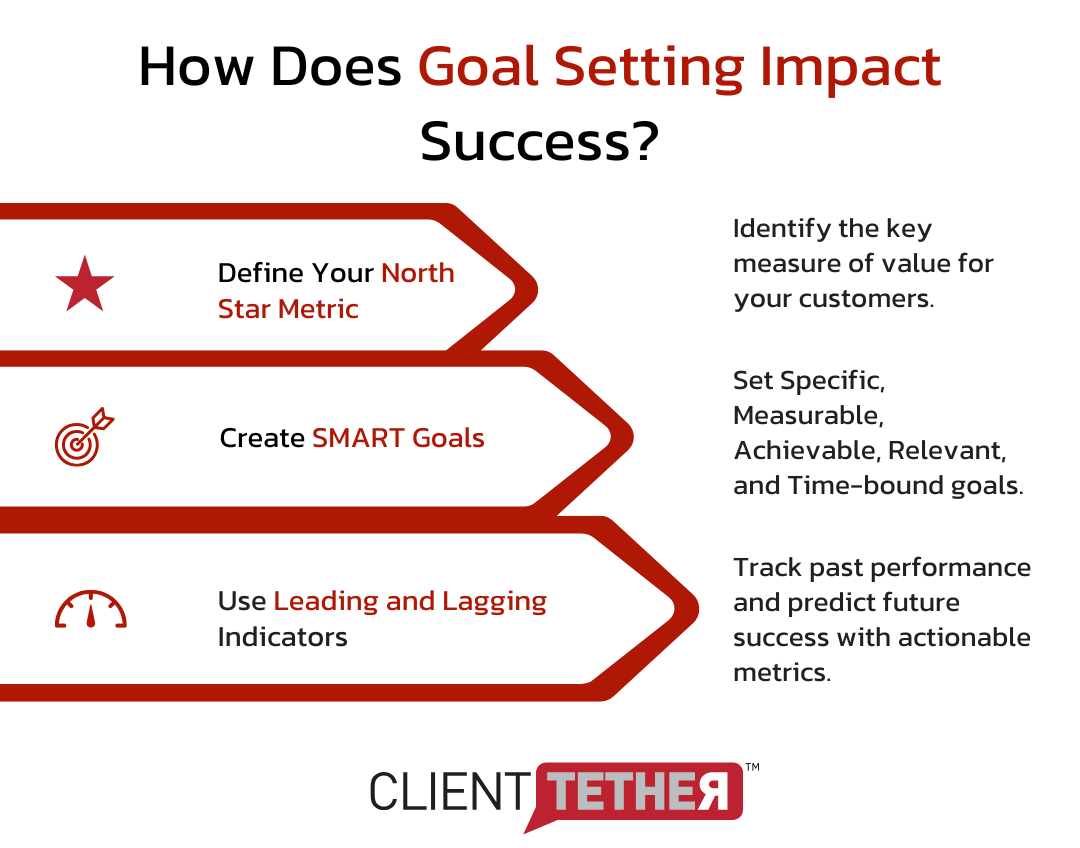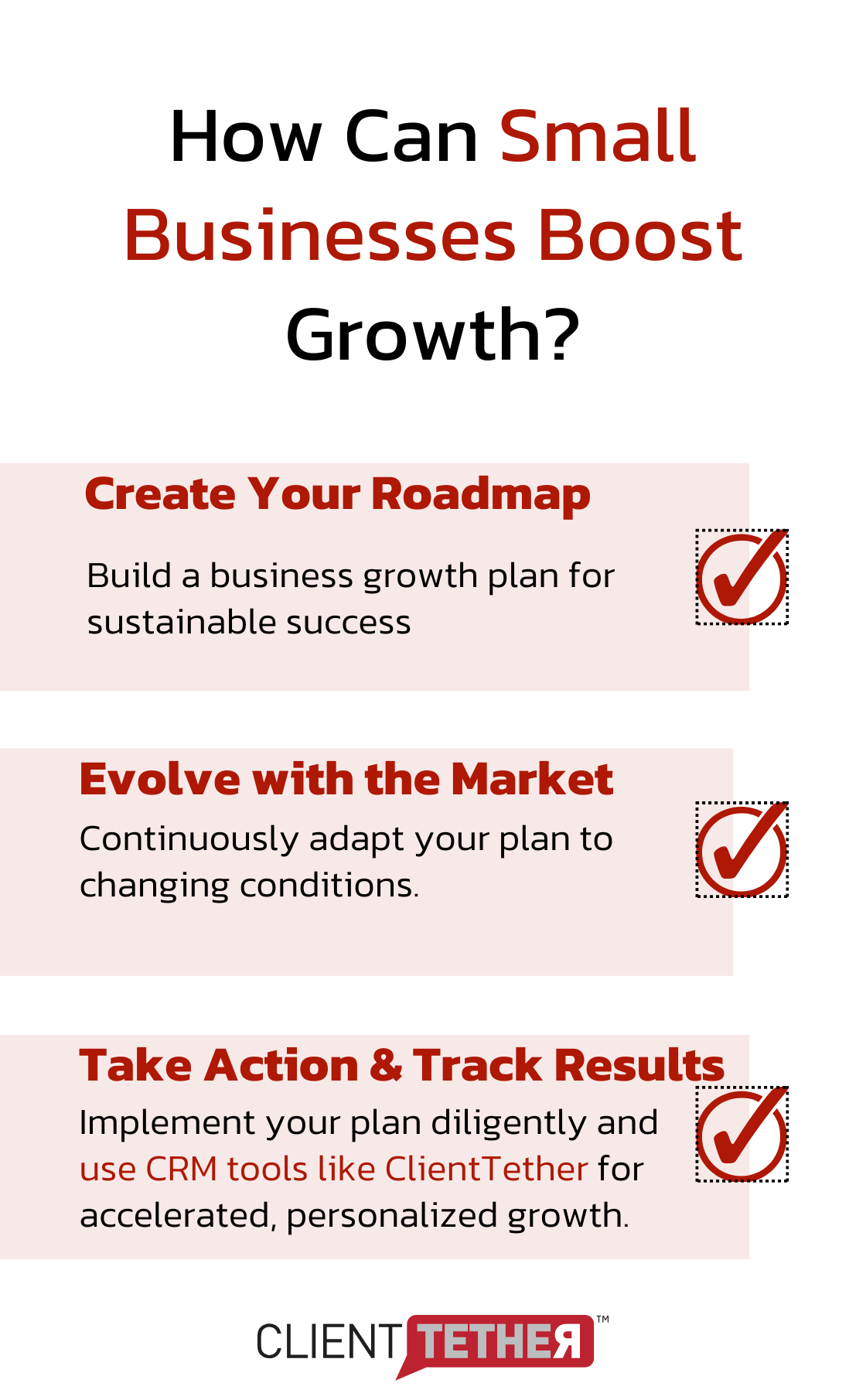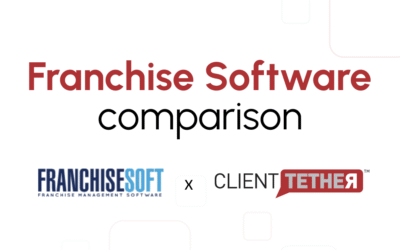Growing a business is no small feat. It requires careful planning, strategic thinking, and a crystal clear roadmap.
From identifying new market opportunities to managing resources effectively, the path can often feel overwhelming. There’s a myriad of challenges that businesses encounter on their journey to expansion, and we’ve seen them all.
But like we love to say here at ClientTether: building a franchise is hard, growing one doesn’t have to be.
That’s why we’ve developed this comprehensive guide, designed to empower you with the tools and insights necessary to create an effective franchise growth strategy. With the right strategies in place, you can navigate the complexities of growth and position your franchise for long-term success.
Where Does Your Business Stand Today?
Financial Health Check
Start your assessment with a thorough examination of your financial statements. Analyze your revenue trends, profit margins, and cash flow.
Ask yourself: are your profits increasing year-over-year? What’s your current runway? Research tells us that 82% of business failures stem from cash flow problems. This underscores how crucial it is to have a clear understanding of your financial health.
But don’t limit your analysis to isolated numbers. Compare your figures to industry benchmarks.
For instance, if the average profit margin in your industry is 15% and yours stands at 10%, this discrepancy flags an issue you must address in your franchise growth strategy.
SWOT Analysis: Your Business Under the Microscope
SWOT analysis serves as a practical tool to uncover hidden opportunities, potential pitfalls, overlooked strengths or underestimated external threats.
Consider this real-world example: a franchise industry client discovered through their SWOT analysis that their quick response time to customer inquiries was a major strength.
They capitalized on this insight, making it a central part of their marketing strategy. The result? A 25% increase in new franchise sign-ups.
Market Position and your Brand
Understanding your market position extends beyond knowing your market share. It involves comprehending your unique value proposition and how it measures up against your competitors.
Utilize tools like Google Trends to compare interest in your products or services to your competitors. Analyze customer reviews (both yours and your competitors’) to grasp what customers value most.
McKinsey found that companies that regularly conduct market research grow 2-3 times faster than those that don’t.
Customer Insights: The Voice of Your Market
Your customers hold valuable insights that can shape your growth strategy. Conduct surveys, interviews, or focus groups to gather their feedback.
What do they love about your product or service? What improvements do they suggest?
Pay attention to customer retention rates and lifetime value. These are some key franchise performance metrics that offer a window into customer satisfaction and the long-term health of your business.
Operational Efficiency
Assess your current operational processes. Are there bottlenecks that hinder growth? Do you have the right technology and tools in place to scale efficiently?

With a comprehensive understanding of your current business position, you’ll ready to set a clear and achievable franchise growth strategy.
Let’s explore how to define objectives that will propel your business forward.
How to Set Growth Goals That Drive Success
Define Your North Star Metric
Every business needs a North Star Metric – the single measure that best reflects the amount of value that your company brings to customers.
This should serve as a focus for growth while also aligning with your company’s vision and mission.
Create SMART Goals
Once you identify your North Star Metric, break it down into SMART goals: these are Specific, Measurable, Achievable, Relevant, and Time-bound.
This might read as a cliché but they really put your franchise growth strategy on the real world, making execution possible through visibility and alignment.

Establish Leading and Lagging Indicators
Your franchise growth strategy should include both leading and lagging indicators.
Lagging indicators (like revenue or profit) show you where you’ve been. Leading indicators (such as website traffic or sales calls made) help predict future performance.
For example, if you aim to increase sales by 25% this year, a leading indicator might be to increase qualified leads by 40%. This gives your team a concrete, actionable goal that directly contributes to the larger objective.
Align Individual and Team Goals
Ensure that every team member’s goals align with your overall growth objectives. According to a study by Gallup, employees whose goals align with the organization’s goals are 3.6 times more likely to be engaged at work.
A home services franchise aligned its technicians’ goals with the company’s customer satisfaction targets. The result? A significant increase in positive reviews and a boost in repeat business.
Review and Adjust Regularly
Setting goals is just the beginning. You can’t count on a franchise growth strategy that does not include regular review and proper adjustment of these goals.
As you implement your growth strategies, prepare to pivot based on new data and changing market conditions. Your growth plan should evolve as your business grows and market dynamics shift.
With clear, achievable goals, it’s time to develop strategies to turn these objectives into reality. Let’s look at some effective tactics for business expansion and growth.
Strategies That Drive Franchise Growth
Deepen Market Penetration
To deepen market penetration, consider developing comprehensive loyalty programs and personalizing customer experiences. These can enhance customer loyalty and retention, which are crucial for franchise growth.
Another effective tactic involves offering bundled products or services. A software company started offering its core product bundled with complementary services. This strategy resulted in a 35% increase in average transaction value.
Innovate Through Product Development
Successful product development can most definitely put you ahead of the competition. If you got a solid offering, doing what others don’t.
However, this requires a deep understanding of customer needs and market trends, like we’ve covered above. It might sound obvious but overlooking steps on your franchise growth strategy can be costly, and not just in a financial sense.
Try conducting regular customer surveys or focus groups to gather insights.
Forge Strategic Partnerships
Strategic alliances are powerful partnerships that bring together two or more companies, allowing them to combine their strengths and tackle shared goals. These partnerships can serve as a powerful growth lever, allowing you to tap into new markets, technologies, or customer bases.
When identifying potential partners, look for companies that complement your offerings without directly competing.
Leverage Data-Driven Marketing
Implement a robust CRM system to track customer interactions and preferences; ClientTether’s Franchise CRM, for example, has helped businesses achieve up to 300% sales growth in just 14 months through automated, personalized communications.
Use A/B testing to optimize your marketing efforts. And this can be as simple as changing email introductions—try testing different lines and formats, and keep track of open rates and click-through rates to see if the change pays off or not.

Franchise Growth Strategy: Winning the Long Game
Growth doesn’t just show up because you wrote a plan.
It comes alive when you work that plan smartly, with the right systems in place to scale what’s already working.
It provides a clear direction for sustainable expansion and helps you navigate obstacles. Your plan should evolve as market conditions change and new opportunities emerge.
Take action on your strategies and track your progress diligently. Implement your plan and watch your business closely. Tools like a Franchise Management Software can accelerate your growth through automation and personalized communications.
So take this strategy, align your team, fire up your CRM, and get moving. You’ve got a roadmap. Now it’s time to build momentum.




